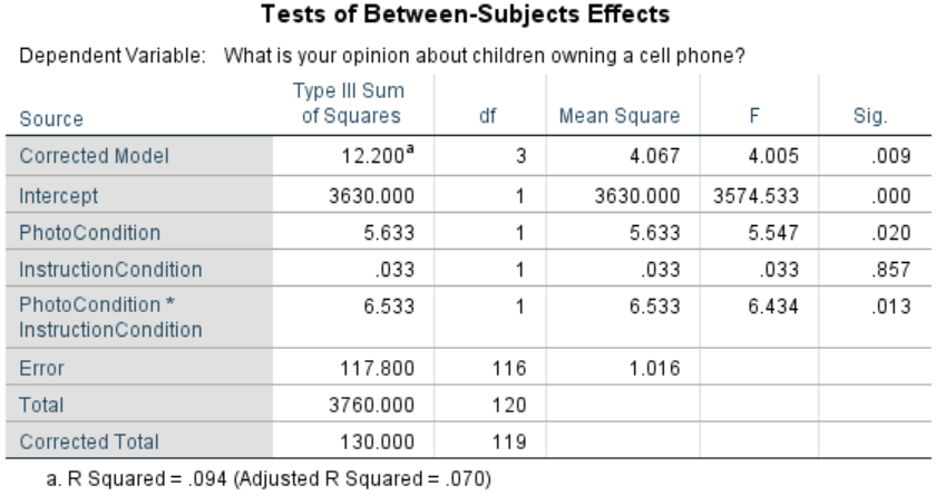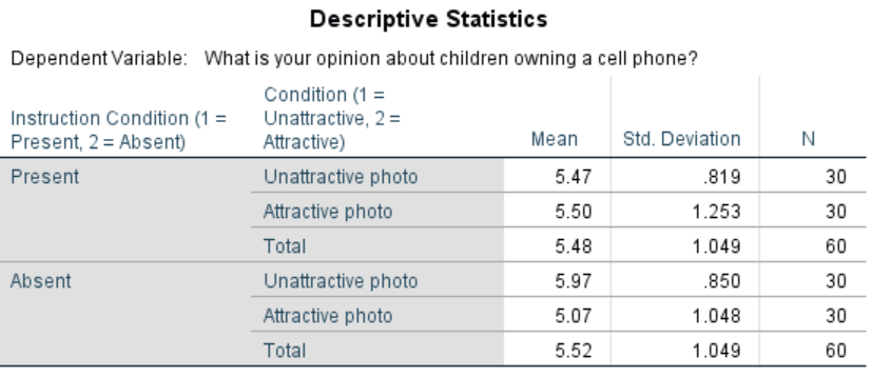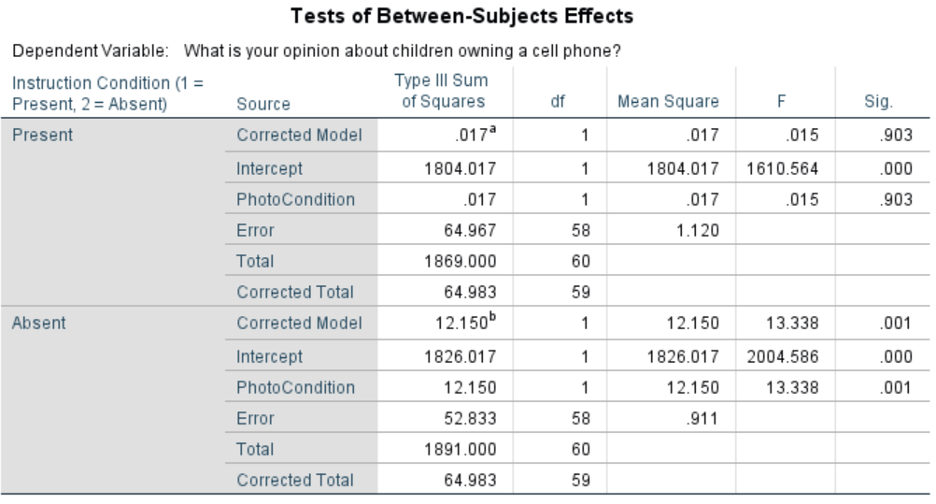Question
Crash Course In Statistics - Two Way Factorial ANOVA - Quiz #5 (Attractiveness, Fall 2021) Instructions: Recall the Attractiveness of the essay author study from
Crash Course In Statistics - Two Way Factorial ANOVA - Quiz #5 (Attractiveness, Fall 2021) Instructions: Recall the "Attractiveness of the essay author" study from your prior Crash Course Quizzes (#2, #3 and #4). The study focused on the attractiveness of an essay author, seeing how manipulating that attractiveness impacts participant assessments of the author's argument that children should not own a cell phone. For Crash Course #5, imagine you focus on the attractive and unattractive photographs only (so ignore the "No photo" condition for this crash course). Your prior crash courses showed that participant ratings did differ depending on the attractiveness of the author. Now you want to see if you can reduce the impact of attractiveness on participant ratings. You decide to warn some participants that an author's attractiveness can impact their opinions. In the correction instruction present condition, participants read the following: "Please try to make sure your perceptions about the level of physical attractiveness of the person who wrote this message do not influence your ratings and judgments about the topic written in the message." Participants in the correction instruction absent condition do not see this instruction. In our new factorial study, participants receive one of four surveys that focus on a combination of the attractiveness conditions and the correction instructions condition: 1). Attractive + Correction Instruction Present, 2). Unattractive + Correction Instruction Present, 3). Attractive + Correction Instruction Absent, or 4) Unattractive + Correction Instruction Absent. All participants then rate the item "What is your opinion about children owning a cell phone?" on a 7-point scale (1 = against; 7 = in favor). Since the author is trying to persuade participants against allowing children to own a cell phone, the researchers predict that participants will score lower on this scale if the author is attractive than if she is unattractive, but that warning about attractiveness using the correction instruction will dampen the attractiveness effect. Using this study, answer the questions below and transfer your answers to your Crash Course in Statistics - The 2 X 2 ANOVA Quiz #5 in Canvas (1 point per question). IMPORTANT: The answer options in Canvas may not be in the same order you see them below, so make sure to copy over the CONTENT of the answer and not simply the answer letter (A, B, C, D, or E). Note: If you want to run these analyses yourself, look for the SPSS file called "#5 2 X 2 Crash Course Data Attractiveness Fall" in Canvas - not required, but definitely recommended!)
1). What are the independent and dependent variables in this study? Choose the best option from those listed below. A. There is one independent variable: the photo condition (unattractive versus attractive). There are two dependent variables. First, there is the correction instruction (present versus absent). Second, there is the participant ratings of "What is your opinion about children owning a cell phone?" on a 7-point scale (1 = against; 7 = in favor). B. There are two independent variables. First, there is the photo condition (unattractive versus attractive). Second, there is the correction instruction (present versus absent). There are two dependent variables: First, there is the participant's rating of the essay author attractiveness on a 1 (unattractive) to 7 (attractive) scale. Second, there is the participant ratings of "What is your opinion about children owning a cell phone?" on a 7-point scale (1 = against; 7 = in favor).
C. There are two independent variables. First, there is the photo condition (unattractive versus attractive). Second, there is the correction instruction (present versus absent). There is one dependent variable: participant ratings of "What is your opinion about children owning a cell phone?" on a 7-point scale (1 = against; 7 = in favor). D. There are two independent variables. First, there is the photo condition (unattractive versus attractive). Second, there is the correction instruction (present versus absent). There is one dependent variable: participant ratings of "What is your opinion about children owning a cell phone?" on a 7-point scale (0 = against; 6 = in favor). E. There are four independent variables. The first is the unattractive condition. The second is the attractive condition. The third is the correction instruction present condition. The fourth is the correct instruction absent condition. There is one dependent variable: participant ratings of "What is your opinion about children owning a cell phone?" on a 7-point scale (1 = against; 7 = in favor). You run a Factorial AVOVA on this data set and get the following SPSS output. Using this output, interpret the information.




Step by Step Solution
There are 3 Steps involved in it
Step: 1

Get Instant Access to Expert-Tailored Solutions
See step-by-step solutions with expert insights and AI powered tools for academic success
Step: 2

Step: 3

Ace Your Homework with AI
Get the answers you need in no time with our AI-driven, step-by-step assistance
Get Started


